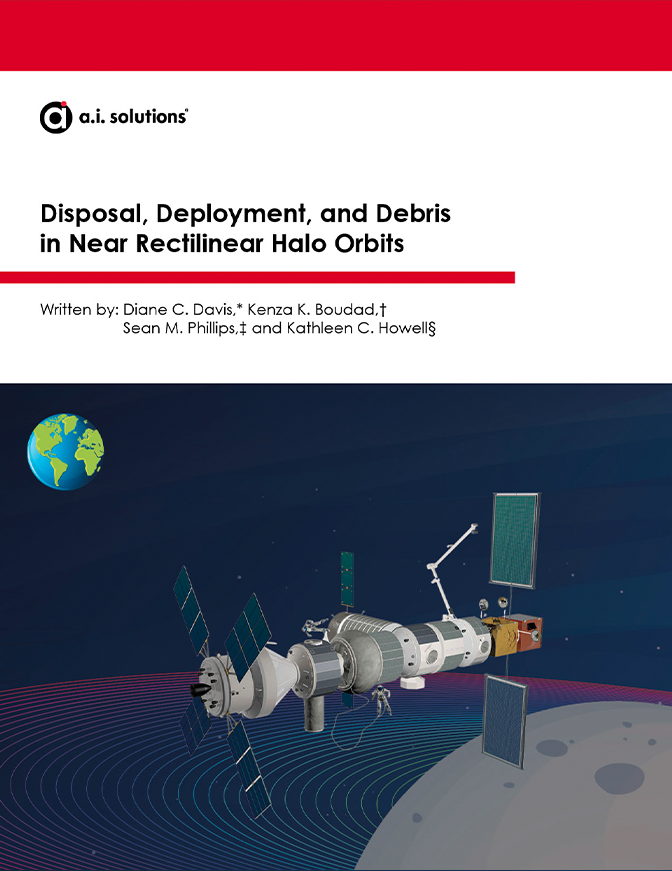
Automated
How is Debris Managed with NRHOs?
The Lunar Orbital Platform-Gateway1 is proposed as an outpost in deep space: a proving ground for deep space technologies and a staging location for missions beyond Earth orbit. Envisioned as a crew-tended spacecraft, the Gateway will be constructed over time as various components are delivered either as co-manifested payloads with Orion or independently without crew presence. Naturally, spacecraft and objects with a wide range of shapes and masses will also depart the Gateway for other destinations. Examples of Gateway departures are wide-ranging and include fast, crewed transits back to Earth, deployment of cubesats to locations in cislunar space, departure for Mars, lander descent to the lunar surface, safe disposal of discarded logistics modules to heliocentric space, deployment of servicing spacecraft to satellites in Sun-Earth halo orbits, and venting of wastewater into space. Each of these examples represents an object departing the Gateway under varying circumstances; each departure is governed by the dynamics of the Gateway orbit and the surrounding dynamical environment.
The current baseline orbit for the Gateway is a Near Rectilinear Halo Orbit (NRHO) near the Moon.2 Two NRHOs are investigated in the current analysis; both exhibit nearly-stable behavior, but over time, any unmaintained object in such an orbit eventually departs due to the small instabilities associated with these NRHOs. A separation maneuver speeds the departure from the NRHO, but the effects of the maneuver on the spacecraft behavior depend on the location, magnitude, and direction of the burn. A previous investigation3 examined departure from the NRHO and escape from the Earth-Moon vicinity from the perspective of logistics module (LM) disposal. The current investigation extends this work, exploring several additional aspects of the dynamics of departure from the NRHO. The analysis is applicable to large Gateway components like the LM, small cubesats, and particles in frozen wastewater plumes. The first phase of the analysis addresses immediate post-separation behavior. After separation from the Gateway, a departing object may diverge from the NRHO immediately, or it may remain in the vicinity of the NRHO for one or many revolutions. The rate of departure depends on the location, magnitude, and direction of the separation Δv. Some maneuvers result in trajectories that risk recontacting the Gateway, leading to collision or contamination concerns. The extensive magnitude of the design space leads to computational complexity, and recontact maps are generated to facilitate the analysis. In the second phase of the study, the path of the spacecraft ix examined once it is no longer near the Gateway. After a spacecraft has departed the NRHO, the dynamics are dominated by the gravity of the Sun and Earth, and the flow of trajectories in the multibody regime governs its eventual destination.
Click the image below to download the white paper.



